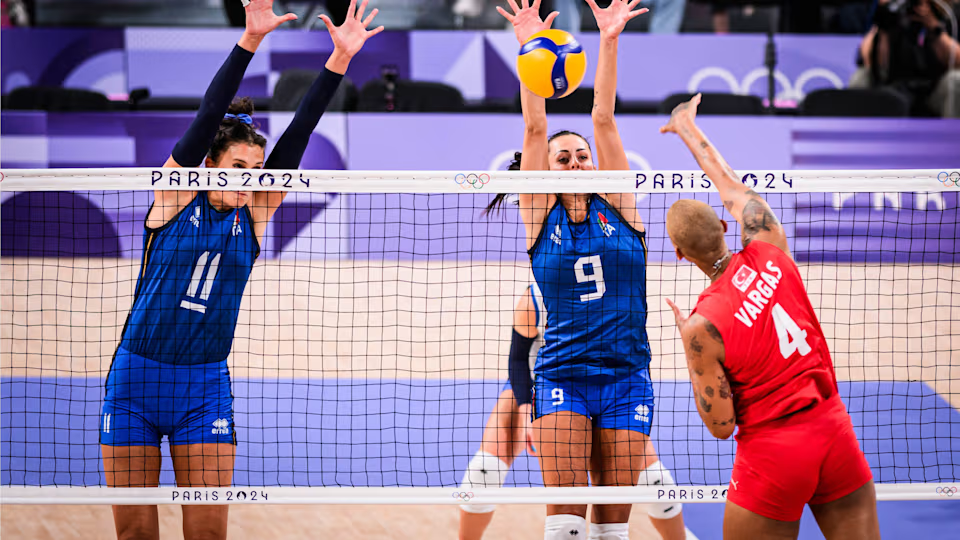Introduction:
Technology has long been a driving force behind change in the sports industry. From the introduction of advanced analytics and data collection tools to wearable technology and video-assisted refereeing, technological innovations are not only enhancing athlete performance but also reshaping the rules and dynamics of sports. As sports continue to evolve, experts are increasingly considering how emerging technologies might further impact the way games are played, officiated, and regulated. In this article, we will explore the technological advancements experts believe will have the most significant influence on the rules of various sports and how these innovations could change the future landscape of competition.
Section 1: Video-Assisted Refereeing (VAR) and the Future of Officiating
- Evolution of Video Technology: Video-Assisted Refereeing (VAR) has already been implemented in several major sports, particularly football and rugby, to assist referees in making accurate decisions regarding key moments such as goals, penalties, and offside calls. While its introduction has been met with mixed reactions, experts believe that VAR and similar video technologies will continue to evolve, potentially influencing the very structure and flow of games.
- Expert Opinion: Dr. Kevin Roberts, a sports technology analyst, notes, “VAR has already shown its potential in reducing human error in officiating. However, as technology improves, the way we use it will change. In the future, we might see more proactive uses of video review, with referees being able to access data and footage almost in real-time to make better, faster decisions.” As technology advances, experts speculate that the scope of VAR could extend beyond just correcting errors. Future iterations could allow referees to analyze plays more thoroughly during the game, perhaps even allowing them to consult AI-driven suggestions or advanced data analytics for decision-making in real time.
- Potential Rule Changes: Some experts predict that as VAR becomes more seamless and integrated into sports, the rules surrounding its use will evolve. For instance, there might be fewer opportunities for challenges from coaches, and referees might be given more autonomy in utilizing technology without external intervention, allowing for quicker, more accurate decisions that could influence how fast-paced or strategic a game is.
Section 2: Artificial Intelligence and Data Analytics in Strategic Planning
- AI-Driven Performance Analysis: One of the most significant technological advancements in sports is the use of artificial intelligence (AI) and data analytics to optimize performance, predict outcomes, and strategize game plans. In many sports, AI is already being used to analyze player performance, evaluate opponent tactics, and even predict future outcomes based on vast amounts of data.
- Expert Opinion: Dr. Sophie Jackson, a professor of sports science, suggests, “AI will likely change the strategic rules of sports. As data becomes more sophisticated, coaches could start using predictive models not just to fine-tune tactics, but also to adjust in real-time during a game. This could lead to rule changes, such as allowing for more flexible timeouts or enabling coaches to make mid-game decisions that are informed by live data analysis.” In American football, for example, coaches might use AI-driven insights to influence tactical decisions like when to go for it on 4th down, or how to exploit an opponent’s weaknesses. Similarly, in basketball, real-time AI analytics could lead to changes in substitution patterns or offensive strategies, adjusting dynamically to the flow of the game.
- Potential Rule Changes: As AI becomes more integrated into sports, some experts speculate that it could lead to the implementation of new rules around in-game data use. For instance, coaches might be allowed to access certain analytics during live games, which could result in changes to time limits on decision-making or additional stoppages in play. The introduction of AI into officiating might also lead to greater precision in applying complex rule systems, especially in sports like cricket and football, where decisions often hinge on highly technical rules.
Section 3: Wearable Technology and Athlete Monitoring
- The Rise of Wearables:Wearable technology such as heart rate monitors, GPS trackers, and advanced motion sensors is already being used to monitor athletes’ physical conditions during training and in competition. These devices track variables such as speed, distance, heart rate, and even fatigue levels. As wearable technology becomes more advanced, experts believe it could alter not only how athletes train but also how they are regulated during actual competition.
- Expert Opinion: Dr. Lara Simmons, an expert in sports medicine, explains, “Wearable tech allows us to monitor athlete fatigue in real-time, and it has the potential to change game rules related to player health and safety. For example, we may see the implementation of mandatory fatigue monitoring in high-contact sports like football or rugby, where players are at risk of injury if they push themselves too hard.” Experts also predict that wearables could provide real-time injury tracking, helping coaches and medical staff make immediate decisions about player safety. This could lead to rules that prevent players from continuing in a game when certain thresholds of physical strain or risk have been exceeded.
- Potential Rule Changes: As wearable tech becomes more accurate, sports organizations might implement regulations that mandate real-time monitoring of players’ physical and psychological states, possibly leading to rule changes such as automatic substitutions or breaks when an athlete’s condition crosses a certain threshold. This could particularly impact high-risk sports like football, basketball, and soccer, where injuries related to overexertion are common.

Section 4: Virtual Reality and Training Innovations
- Virtual Reality for Skill Development:Virtual reality (VR) has been gaining traction as a tool for sports training. VR allows athletes to simulate game situations without the need for physical activity, providing them with a safe, controlled environment in which they can practice specific skills and strategies. Experts believe VR could transform how athletes train and, eventually, how sports are played.
- Expert Opinion: Dr. David Miller, a leading sports technologist, suggests that VR could eventually change the rules of sports by allowing athletes to experience multiple scenarios before they even step onto the field or court. “In the future, we could see VR systems that allow athletes to experience simulated games and make real-time decisions in high-pressure situations. This might affect training rules, such as allowing athletes to train more intensively in a VR setting rather than on the field.” VR could also impact decision-making during training camps and the development of playbooks. Coaches may use VR simulations to test new rules, strategies, and player combinations in a virtual environment before applying them in real games, leading to rapid evolution in training methodologies.
- Potential Rule Changes: As VR training becomes more widespread, sports organizations might introduce rules regarding the use of VR technology during official training camps or off-season programs. For example, some rules might be created to regulate how much VR training an athlete can undergo before it is considered a substitute for actual field training.
Section 5: Biotechnology and Genetic Engineering
- Biotechnology and Gene Editing: The development of biotechnology and gene editing tools, such as CRISPR, has raised concerns and possibilities about the future of human performance in sports. While the use of gene editing in sports is still a contentious issue, experts suggest that it could eventually play a role in shaping the future of competition, with athletes potentially benefiting from enhanced physical abilities.
- Expert Opinion: Dr. Ethan Moore, a biotechnologist, points out, “In the future, gene editing could be used to enhance an athlete’s physical capabilities, such as improving endurance, strength, and recovery times. This would completely change the nature of sports, as it would lead to new ethical questions and potentially necessitate changes to rules surrounding eligibility and performance standards.” As biotechnological advances become more widespread, sports governing bodies may need to introduce rules to prevent the misuse of genetic enhancements, or at least regulate their use in competitive sports. It is possible that anti-doping regulations might expand to include genetic manipulation or biological enhancements.
- Potential Rule Changes: The introduction of biotechnology into sports could lead to the creation of new rules around the ethical boundaries of performance enhancement. For example, governing bodies might require regular genetic testing or impose bans on certain types of genetic modifications in athletes. As gene editing technology becomes more advanced, stricter regulations could be introduced to maintain a level playing field.
Conclusion:
Experts agree that technological advancements will continue to transform the landscape of sports, not just by enhancing athlete performance, but also by influencing the very rules and regulations that govern competitive play. From video-assisted refereeing to AI-driven strategies, wearable tech, virtual reality, and even genetic engineering, the innovations that are on the horizon could significantly alter how games are played, managed, and officiated.
As these technologies continue to develop, sports organizations will need to navigate the challenges of balancing technological progress with fairness, safety, and ethical considerations. The future of sports will likely see the emergence of new rules and systems designed to ensure that the integration of technology serves to enhance the spirit of fair competition while embracing the incredible potential these innovations offer.


































Discussion about this post